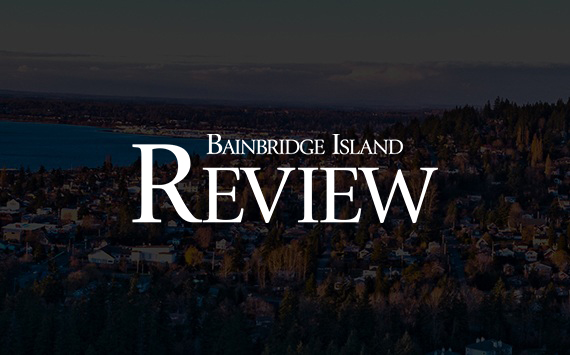If major changes are not made to Highway 305, it will not only become parking-lot slow within a few years, but will become a semi-permanent wall, cutting Bainbridge in half.
While that scenario could be avoided, changes will be expensive and will have their own down-sides, said Public Works Director Randy Witt.
“There is no way to say that there will be easy solutions,” Witt said. “The question is whether we want to have the highway divide us.”
The city will take the first step in formulating an answer to that question at an open house on island-wide transportation from 4 to 8 p.m. Jan. 29, in the commons room of Bainbridge High School.
The city will present information about the island’s transportation future and possible remedies, and begin gathering feedback about the options. Ultimately, the information will be used to revise the transportation element of the island’s comprehensive plan.
Using traffic counts taken over the past two years and models of future population growth, consultants Molly Johnson and John Davies projected that if no changes are made, the rush-hour drive from Winslow Way to Suquamish will lengthen from its current 17.5 minutes to 32 minutes by 2008, and to well over 40 minutes by 2022.
Modifying crossings to facilitate movement across the highway could drop that time to 26 minutes through 2022. If, in addition, both the highway and the Agate Passage Bridge were widened to four lanes, the travel time in 20 years could drop to under 10 minutes, the consultants say.
Aside from cost, the choice between those alternatives depends on whether island residents envision the highway only as a way off the island, or whether it will be an integral part of on-island travel.
“One possibility is that we can improve ways to get across the highway while restricting ways to get on and off it,” Witt said. “That would increase traffic on other roads. Or we could make improvements to the highway and use it ourselves.”
To help make that decision, the city will present data from last year showing that even during the evening rush hour, islanders are heavy users of the highway.
The consultants took a one-day “snapshot” of ferry traffic by taking the license numbers of cars coming off the boat or leaving ferry-area parking lots, then finding, through the state, the home addresses of the owners.
What they found was that 44 percent of the cars belonged to island residents and 39 percent to residents of Kitsap County, with the remainder belonging to King County or out-of-area residents.
Consultants then compared the numbers of cars leaving the ferry terminal to the number actually crossing the Agate Passage Bridge.
“At peak hour, between 5 and 6 p.m., we counted 1,200 cars going across the bridge,” said consultant Molly Johnson. “And of those we found 300 to 400 came from the ferry or the ferry terminal. The rest originated on the island, either people who work on the island but don’t live there or residents making a trip across the bridge.”
Some of the residents’ trips, Witt said, may be a result of the congestion, and the difficulty of getting onto the highway to go downtown.
“From the north end of the island, Poulsbo is almost as close as downtown, not even considering the time it would take to make a left turn onto the highway,” he said.
A complicating factor in any possible plan to widen the highway is that it’s not just the city’s decision to make.
“It will be up to the state to put it on their radar screen, which is likely to happen never,” said planner Justina Guyott, part of the city’s transportation planning team.
Plans within the city’s jurisdiction include over- or underpasses at Koura, Lovgreen and Hidden Cove roads, and intersection improvements at West Port Madison, Day and Sportsman’s Club roads. The intersections could be simple overpasses, which would not provide access to the highway, or freeway-like interchanges, with on- and off-ramps as well as a way across the highway.
The plan also deals with increasing congestion in Winslow, principally through a proliferation of roundabouts. The draft plan calls for a roundabout or traffic light at Wyatt Way and Madison Avenue – the most critical intersection – and at Sportsman Club and High School roads by 2008.
By 2022, the plan adds lights or roundabouts at Winslow Way and Madison and at Wyatt and Finch Road.
The plan also lists a number of possible “connectivity” projects, where dead-end roads are connected. Some have proved consistently controversial – connecting Ericksen to Hildebrand, or connecting the two ends of Mandus Olson Road – and others are likely to generate just as much opposition, such as connecting Wardwell northward to Koura, or extending Toe Jam Hill’s Darden Lane westward through the Fort Ward area.
“A number of those ideas are likely to fall out of the process fairly soon,” Witt said.
*****
The city will host a workshop on the island’s future transportation plan from 4 p.m. to 8 p.m. Jan. 29, in the commons room of Bainbridge High School. Residents are invited to examine possible ideas for the island’s roadways of the future, a first step in revising the transportation element of the city’s comprehensive plan. Information: 842-7633.


